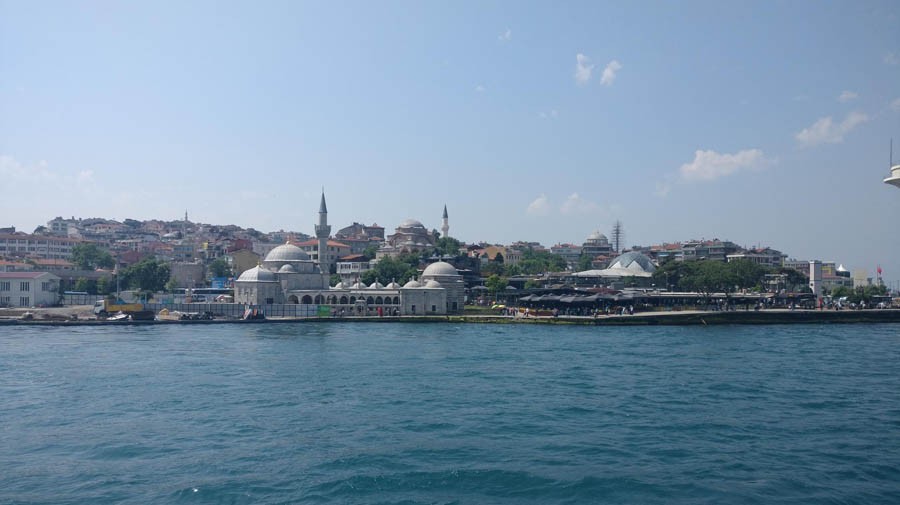
Explore Istanbul -- cool places to see, exotic food to eat, and mysterious narrow streets to wander

French emperor Napoleon once said, "If the world was only one country, Istanbul would be its capital!"
Perhaps, back then, the statement held true only due to Istanbul’s geographical location but today, and arguably so, it is totally believable.
My sister and I chose the city for a quick one-week-long getaway to escape Karachi’s heat and recharge us. While usually people opt for at least one more city in their itineraries, we decided to stick to just Istanbul, and take our own time in exploring it.
Formerly known as Byzantium and later Constantinople, Istanbul is one of the most awe-inspiring cities in the world. Spread across Europe and Asia, with Bosphorus strait connecting the Sea of Marmara and the Black Sea, Istanbul is home to stunning architecture, delectable food and some of the most hospitable people you would ever find.
Before taking a flight to Istanbul, it is worth reading up on the city’s complex history to enjoy the most popular sightseeing spots. Despite not being the capital, Istanbul is the financial and cultural hub of Turkey (also the largest city with a population of over 15 million). It is also a multi-cultural city with plenty to offer, which makes it one of the most preferred travel destinations for tourists seeking a wholesome experience.
We landed early morning and checked into our hotel located near the lively Istiklal Street by noon. Since we were quite fresh and excited, we decided to go out and start exploring the city straight away. The best way to discover any city is by walking, and since we don’t get to do that too often back home in Karachi, we had decided beforehand to aim to walk as much as possible.
The streets of Istanbul are incredibly narrow and steep, but one quickly adapts to them. Locals (especially those outside of main touristy areas) are not fluent in English, however they love to talk and at times in quite an aggressive tone. Their idea of small talk is also quite different to ours -- questions can range from your job, age, hometown to even marital status! I have been told it is perfectly normal and one should not get alarmed by this. Learning some basic words and phrases in Turkish and having a translation app on your smartphone proves extremely helpful.
On a side note, expect to be offered a lot of Turkish tea by locals.
Stray cats and dogs hold a special place in the locals’ heart, which is evident by how well they are taken care of. You will spot them everywhere -- on streets and even inside restaurants and boutiques.
We started our trip with Sultan Ahmed Mosque (Blue Mosque), the only mosque in Istanbul with six minarets. The stunning interior features over 21,000 tiles, windows with colourful stained glass and calligraphy art of Quranic verses.
Right next to the Blue Mosque is Hagia Sophia, originally an old Greek Christian church, later turned into an imperial mosque and finally a museum. It was the world’s largest cathedral for several centuries, and is considered to be one of the best examples of inter-religious harmony.
A few minutes’ walk from Hagia Sophia takes you to Basilica Cistern, the best-preserved underground water storages of Istanbul. It was primarily built for supplying water to the royal palaces and the surrounding buildings, and has over 330 marble columns holding the cistern’s roof.
Galata Tower, located on the European side of the Golden Horn, dominates the skyline of the area and offers mesmerising views of the city from the top.
Regardless of where one stays in Istanbul, one is bound to pass by Bosphorus numerous times during one’s stay. We took a day-long cruise on a public ferry because we were on a budget, and ended the trip by enjoying a fresh traditional fish sandwich while sitting by the docks.
Being literary fans, the highlight of our trip was visiting the Museum of Innocence by Turkish author Orhan Pamuk, which he curated while writing the namesake book. The museum comprises objects which not only hold relevance to his book’s characters but also pay a beautiful ode to Turkey’s rich history from the 1970s to early 2000s.
Turkish cuisine is as diverse, colourful and nuanced as the country’s landscape. The country is a paradise for meat lovers. It is best to stick to the local cuisine and try out a wide range of dishes. The best thing is that you can enjoy a hearty meal in whatever your budget is. Small roadside eateries serve meals as scrumptious as those at upscale restaurants.
Turks truly believe in having breakfast like a king. A usual spread comprises several different types of cheeses, honey, olives, fresh breads and thinly sliced salted local meats. Since breakfast was included in our hotel stay, we did not venture out to explore it at different restaurants.
Kebabs are the main highlight of Turkish cuisine, and we tried out as many as we could. The most popular ones include Iskander Kebab, Doner Kebab, Kofte, Adanan Kebab and Shish Taouk. Our favourite restaurants were Ramiz Kofteci and Çiya Kebap. To balance out your meat-heavy meals, Turkish salads and pickles are the perfect side dishes. Cucumbers, a variety of green leaves, chilies, tomatoes and eggplants are top local favourites.
Street food in Istanbul is equally impressive, and we gorged on a few items on almost daily basis. Our favourites were stuffed mussels, Simit (Turkish sesame bagles), grilled corn and roasted chestnuts. For desserts, Hafiz Mustafa is the most popular food chain which is open 24 hours. Our recommendations: Lokum (Turkish delight), Baklava, Baked Rice Pudding and Chicken Breast Pudding.